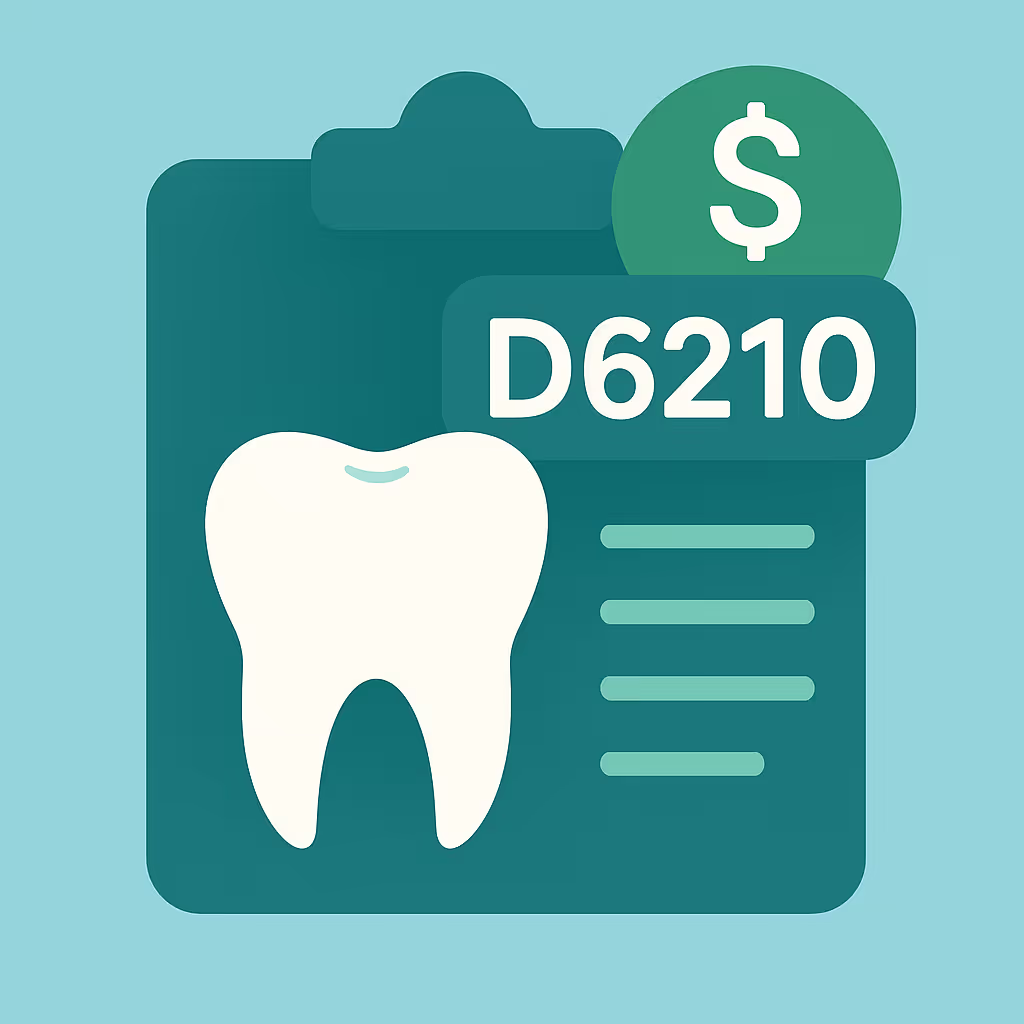Understanding Dental Code D3425
When to Use D3425 dental code
The D3425 dental code refers to an apicoectomy procedure performed on a molar tooth. An apicoectomy is a surgical endodontic treatment where the tip of a tooth’s root (the apex) is removed, along with any surrounding infected tissue. This code should be used when a conventional root canal has failed and retreatment is not feasible, or when persistent infection remains at the root tip of a molar despite previous endodontic therapy. D3425 is specific to molars; for anterior or bicuspid teeth, refer to D3421 as appropriate.
Documentation and Clinical Scenarios
Accurate documentation is crucial for successful reimbursement. When billing D3425, ensure the clinical notes clearly indicate:
- The tooth number and type (confirming it is a molar)
- Diagnosis and reason for apicoectomy (e.g., persistent periapical pathology, failed prior endodontic treatment)
- Pre-operative radiographs showing the pathology
- Details of the procedure performed (removal of root tip, curettage, retrograde filling if placed)
- Post-operative instructions and follow-up plan
Common clinical scenarios for D3425 include chronic periapical abscesses, cysts at the root apex, or fractured root tips in molars where non-surgical retreatment is not an option.
Insurance Billing Tips
To maximize reimbursement and reduce denials for D3425:
- Verify patient benefits before treatment to confirm coverage for surgical endodontic procedures on molars.
- Submit detailed clinical documentation with the claim, including radiographs and narrative explaining the medical necessity.
- Use the correct tooth number and ensure the claim form matches the clinical notes.
- If the claim is denied, review the EOB for the reason and prepare a thorough appeal with additional supporting documentation if needed.
- Track claims in your AR system and follow up proactively with payers to resolve outstanding balances.
Many payers require evidence that non-surgical retreatment was not feasible or previously attempted, so always include this information in your submission.
Example Case for D3425
Consider a patient presenting with persistent discomfort and swelling near tooth #30, a lower right molar, despite a prior root canal. Radiographs reveal a periapical radiolucency. The endodontist determines that retreatment is not possible due to complex canal anatomy. An apicoectomy is performed, removing the root tip and infected tissue. The procedure is documented thoroughly, including pre- and post-op images and a narrative. The claim for D3425 is submitted with all supporting documentation, and the insurance carrier approves payment after initial review, thanks to the comprehensive submission.
By understanding the correct use of D3425 and following best billing practices, dental offices can ensure timely reimbursement and optimal patient care outcomes.





